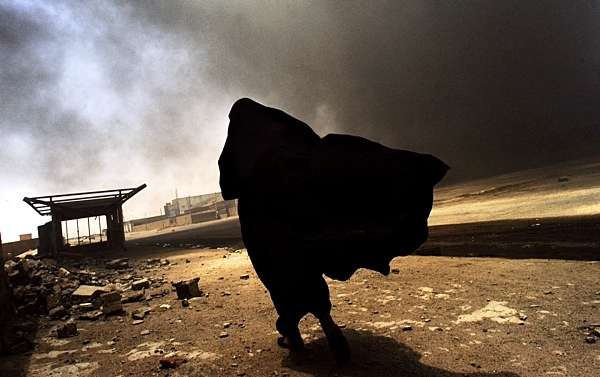War Photographers: Michael Kamber and Louie Palu on Iraq and Afghanistan
"We were supposed to go into Iraq, hold elections, turn over the keys, and get out," says Michael Kamber, a photojournalist and editor of the book Photojournalists on War: The Untold Stories from Iraq. "That's not how it works, and we need to think about that next time we get involved in a military adventure."
It is almost impossible to read Kamber's new book without reflecting on how many of its photographs were taken by people who were either killed, severely injured, or taken captive during the conflict. Kamber, who photographed the war over a 10-year period, counts himself among the survivors. His book is a testament not only to eight years of brutal warfare, but to the 39 photographers whose work is represented in its pages.

Reason TV sat down with Kamber at WAR/PHOTOGRAPHY, an exhibit at the Corcoran Gallery of Art in Washington, D.C. to hear the stories behind the unforgettable photographs in his book. It's an in-depth account of the Iraq War from photojournalists who witnessed key events at close range.
Many of the the book's 160 images have been widely distributed, their impact indelibly marked in the American mind. Other images, which are just as powerful, have rarely been seen. Photojournalists on War also includes compelling eyewitness accounts of battles, the disintegration of soldiers' marriages, and the lasting effects of post-traumatic stress disorder (PTSD).
While Kamber's book chronicles the work of photojournalists who were mostly backed by major publications, images of war are increasingly made by enterprising individuals. In 2006, photojournalist Louie Palu quit his job and traveled to Afghanistan at his own risk and on his own dime. He had never covered a war before. Working without the support – or the constraints – of an editor meant that he was able to photograph with plenty of of artistic freedom. His images are stunning, and it's no surprise that his series of portraits and panoramic black-and-white shots reveal an Afghanistan that looks very different from most press photography.
Palu is also producing The Durrani Kings, a documentary about his experiences photographing Kandahar province, the birthplace of the Taliban.
Both Palu and Kamber remain skeptical of the wars they witnessed. Broken promises and official censorship have led to a public that remains poorly informed about war's devastating effects on ordinary civilians.
If truth is always the first casualty of war, the work of Kamber and Palu are attempts to correct the record.
The Corcoran exhibit continues until September 29.
Produced, shot, and edited by Todd Krainin.
Runs about 9 minutes.
Scroll down for downloadable versions and subscribe to ReasonTV's YouTube Channel to receive notification when new material goes live.




Show Comments (17)